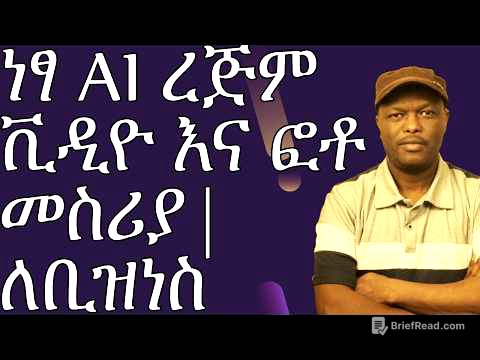TLDR;
This video explains a three-step method for learning and memorising information effectively, based on how the brain works. The method involves encoding, storing, and retrieving information. The video also debunks the myth of learning styles and provides practical tips for applying the method.
- The method involves three steps: encoding, storing, and retrieving information.
- The video debunks the myth of learning styles.
Encoding: The Key to Opening the Door to Learning [1:52]
This chapter focuses on the first step of learning: encoding. It explains that encoding is the process of converting perceived information into a form that can be stored in the brain. The chapter highlights four factors that influence encoding: attention, interest, repetition, and organisation.
- Attention: Being in a focused state allows information to be easily encoded.
- Interest: Information that is emotionally significant or relevant is better encoded.
- Repetition: Finding a balance between too much and too little repetition is crucial for effective encoding.
- Organisation: Structuring information in a way that makes sense to the brain, such as using mind maps or flowcharts, improves encoding.
Storing: Moving Information from Short-Term to Long-Term Memory [4:41]
This chapter focuses on the second step of learning: storing information. It explains that storing information involves moving it from the sensory memory (short-term) to the long-term memory. The chapter introduces the concept of chunking, which involves breaking down large amounts of information into smaller units. It also emphasises the importance of self-testing to solidify information in the long-term memory.
- Chunking: Breaking down large amounts of information into smaller units makes it easier to store.
- Self-testing: Asking yourself questions about the information helps to transfer it to the long-term memory.
Retrieving: Accessing Information When You Need It [9:34]
This chapter focuses on the third step of learning: retrieving information. It explains that retrieving information involves actively recalling and reproducing the learned material. The chapter highlights the importance of practicing retrieval through methods like using past exam papers, multiple-choice tests, or explaining the information to someone else.
- Practice retrieval: Actively recalling and reproducing the learned material helps to solidify it in the long-term memory.
- Use various retrieval methods: Employing different methods like past exam papers, multiple-choice tests, or explaining the information to someone else enhances retrieval.
Elaborate Rehearsal: The Secret to Mastering Large Amounts of Information [6:28]
This chapter introduces the concept of elaborate rehearsal, a technique that involves processing, connecting, and integrating information. The chapter outlines a three-phase method for applying elaborate rehearsal to learn large amounts of information.
- Phase 1: Encoding (2 days)
- Pretesting/Priming: Briefly review existing knowledge to create a sense of relevance.
- Visualisation: Create mental maps connecting concepts, leveraging the dual coding theory.
- Semantic Encoding: Read the material and explain key concepts in your own words.
- Phase 2: Storing (2 days)
- Chunking: Break down information into smaller units and review each chunk for 5 minutes.
- Self-testing: Create and answer practice questions for each chunk, focusing on challenging questions.
- Phase 3: Retrieval (1 day before the exam)
- Practice with exam-like materials: Use past exam papers, multiple-choice tests, or other relevant formats.
- Simulate the exam: Explain the information to someone else, write answers freely, or create multiple-choice tests.
Debunking the Myth of Learning Styles [10:30]
This chapter debunks the myth of learning styles, arguing that there is no scientific evidence to support the idea that people learn better through specific sensory channels. The chapter explains that focusing on a single learning style can actually hinder learning by limiting the use of multiple senses and connections in the brain.
- There is no scientific evidence to support the existence of learning styles.
- Focusing on a single learning style can hinder learning by limiting the use of multiple senses.









